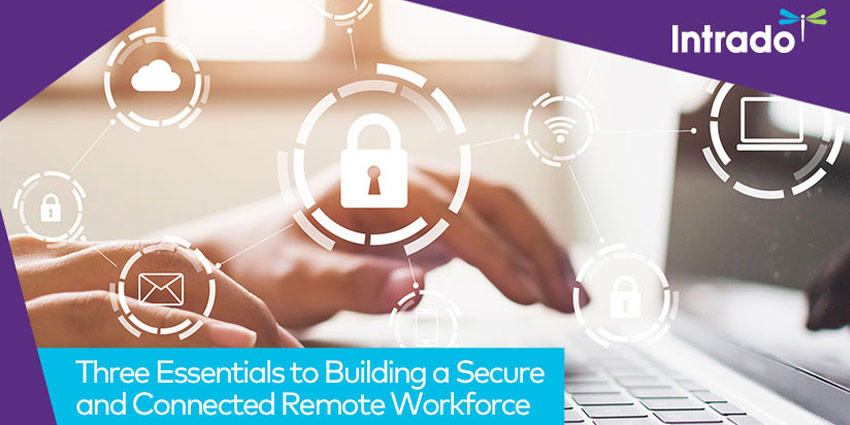Our working lives have seen an enormous transformation over the last six months. And as we know, change is rarely a reversible circumstance. Many businesses are now reflecting on the lessons forced upon us by the pandemic and importantly, on how to use this new knowledge to best effect as we move forward.
The overnight shift to working from home has been the catalyst for a monumental expansion in adoption of technologies like video conferencing, collaboration and cloud file storage. And it is becoming very clear that these technologies will provide the foundation for the future of work, with 70 per cent of employees worldwide wanting to retain the capability to work remotely.
Many organisations are now beginning to plan for this new reality, particularly as previously sceptical employers have witnessed first-hand that remote working can lead to productivity increases rather than the reverse. CIOs and IT professionals are now tasked with enabling a secure and connected remote workforce.
We are working with a number of organisations to develop a customised approach, that protects legacy investments as far as possible, while creating a long-term, sustainable plan for remote working. There are three essentials that should be considered as part of any long-term plan:
1 – Connectivity

The first step to a secure remote working experience is securing the end-to-end connectivity. In the remote working scenario, any vulnerable component can render other secure components irrelevant. While historically VPNs may have offered a solution, many were designed for a fundamentally different time and are just not up to the job of enabling an entire organisation to use that connection for remote work, let alone the use of constant duplex high definition video streams.
We recommend that organisations review whether their VPN is really adding significant security for a user trying to connect from home into a solution hosted on Azure or AWS for example. The move to the cloud and ‘As a Service’ models mean the VPN may just be adding a redundant connectivity hop.
A one-size-fits-all approach is not recommended for your corporate network. To determine your network requirements, it is vital to analyse everything from end user connectivity (cellular or hardwired), to traffic patterns (primarily real-time communications or large file access and transfers). Understanding your user profiles is critical to building out a viable connectivity strategy and make the most of networking technologies, from SD-WAN, to SBC locations to carrier peering and routing.
2 – End Users
Understanding your end users’ needs is an absolutely critical factor in your planning process. Ultimately your end goal is to ensure they are equipped with the right devices, supported by the right network and user experience to work productively. And the solution you adopt will depend on the nature of your business and user needs. I have seen many perfectly satisfactory technologies installed, but never adopted because they weren’t the right fit for users.
As a starting point, here are some of the areas where you need to gather dependable information:
- What do your users need to access? Take everything into account, including large data files, email, telephony, contact centre, meetings, customers, or internal support etc.
- What telephony platform(s) will you use? What is the ratio of PSTN vs IP calls?
- Is your support team using a cloud service or an on-premises solution?
- How do end users access that support platform? For example, if end users are using Microsoft Teams as their primary interface then have you integrated that support platform through APIs into Microsoft Teams to facilitate seamless communication between platforms?
- What devices are your end users currently using? Are these reliable? Do you need a Bring Your Own Device (BYOD) strategy? How will that impact security? Will appliances fit the needs of users more closely and cost-effectively?
- Look at the opportunities presented by new technologies. Is there a role for specialised devices to support remote workers, who are not office-based? For example, we helped an agriculture company integrate monitoring and support workflows through specialised communications equipment with cellular data to allow them to be integrated into a remote workflow and remove the requirement for onsite presence
3 – Compliance & Commercial Factors
It is vital to remember that employers may have a duty of care to their remote workers, and to consider how can you continue to meet those obligations if employees are no longer in the office. A great example of this is providing location-agnostic emergency services, so that if a home-based worker dials an emergency number the ambulance/fire truck/police arrive at their home address and not to the office.
And finally, a word about commercial impacts – remote working fundamentally changes so many things about the operations of a business that the impacts at a commercial level are as substantial as they are far-reaching. It is worth investigating whether there are financial stimulus measures available that will help you make the transition to a long-term sustainable remote-working plan. While we are living in uncertain times, the future definitely offers some exciting possibilities, as well as challenges. With effective planning, it is possible to minimise risk and face the future with confidence, knowing that their remote working strategy leaves absolutely nothing to chance.
Guest Blog by Chris Franke, VP of Global Solutions Strategy, Intrado
Intrado is a global UCaaS partner focused on the needs of enterprise clients since 1999. With a vendor agnostic, holistic approach to technology, we help businesses navigate today’s complex communications landscape. We hold the highest partner ratings from Cisco and Microsoft and maintain partnerships with other leading UCaaS solution providers. As a trusted partner we work with customers to help optimise budgets, and more recently, to help them leverage many of the stimulus measures deployed around the world. Because we take an holistic, vendor-agnostic approach to technology, we can help you aggregate new and existing solutions within a single technology framework, driving efficiencies and stabilising expenditure.







